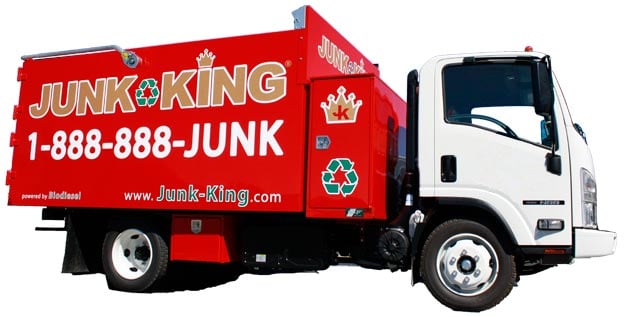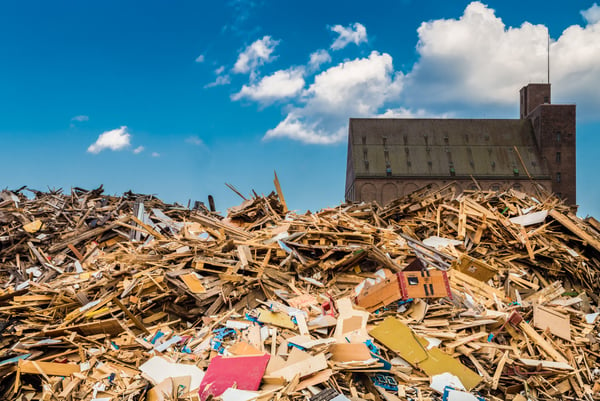Your construction project generates a large amount of junk, but does it all have to go to a landfill? Not if you consider recycling your construction debris.
As a contractor, have you ever wondered how much actual debris and construction waste is produced on your job sites? And have you ever wondered how much of that material could actually be reused somewhere, somehow?
The fact is that, in a typical residential remodel, for example, almost 75% of the debris can be recycled. That means that construction debris disposal does not automatically mean a trip to the dump or local landfill!
Adding Recycling to Your Construction Debris Disposal Options
So what kind of construction waste is there, anyway? Well, a breakdown of the average percentage C&D (Construction & Demolition) debris categories would look like this:
- 6 % Residential construction
- 3% Non-residential construction
- 11% Residential demolition
- 39% Non-residential demolition
- 22% Residential renovation
- 19% Non-residential renovation
While non-residential, or commercial, demolition produces almost 40 percent of the overall C&D waste generated in the U.S. this is probably not a surprise to contractors. What might be surprising, however, is the 22 percent that is made up of debris from residential renovations.
This is particularly significant in that almost a quarter of typical construction debris and waste can be recycled.
Don't "Throw Away" Your Construction Debris!
Too many contractors fail to take advantage of the fact that there is a viable market for much of the waste and debris that gets generated at a typical job site. If we look at another breakdown of waste, this time a typical renovation or remodel, we find that 75 percent of the "waste" is often wasted by going into a landfill instead of being recycled:
- 3% Metals
- 5% Masonry
- 8% Drywall
- 9% Architectural elements
- 20% Cardboard
- 30% Wood
This leaves only about 25 percent of the materials produced that cannot be effectively reused or recycled.
Imagine being able to eliminate up to 75 percent of the solid waste from construction firms out from the landfills. This is huge, especially considering that in the U.S. alone construction accounts for almost 170 million tons of debris each year, according to the EPA.
Recycling as a Business Decision
Recycling requires some advance planning, but the benefits - both immediate and long term - are well worth it. Much of what comes out of a construction site can be reused. In fact, when deconstruction on a site is involved, there can be a great deal of recyclable material that would otherwise be handled as debris to be hauled off to a landfill.
As a contractor there are three main reasons why you should consider construction waste recycling instead of traditional disposal methods such as regular junk removal:
-
Reduced costs of removing and hauling
-
Elimination of high landfill fees
-
Contributes to the production of lower-cost recycled aggregate products
And aside from the economics of choosing a firm to take your construction debris to a recycling plant, there are a variety of benefits in recycling materials rather than dumping them or burying them in a landfill. Waste concrete is a great example.
The benefits of recycling concrete include:
- Keeping concrete debris out of landfills saves landfill space
- Using recycled material as gravel reduces the need for gravel mining
- Using recycled concrete as the base material for roadways reduces the pollution involved in trucking material
Construction debris can be anything from concrete and flooring tiles to fixtures and doors. Other materials like wood, metal, bricks and glass also count. Even the trees, stumps and earth collected from clearing a site falls into this category of waste.
You can recycle most common C&D materials including concrete, porcelain, rigid plastics, tile, lumber, metals, masonry, plastic, rock, carpet, insulation and more. What can actually be recycled at your local facilities may vary depending on location.
Making Recycling a First Option for Your Construction Waste Disposal Plan
The best option is to outsource your construction waste disposal to reputable trash removal companies such as Junk King. By hiring a professional you can rest assured that construction waste disposal will be handled safely, quickly and properly.
Junk King provides an efficient, safe and eco-friendly construction waste disposal service so you don’t need to worry about the pick up or disposal of the debris after your project is complete. Whether you need our services several times during a construction project or just once after it is complete, our hauling professionals will ensure that the construction debris is out of your way so that you can get on with the job.
Our team specializes in construction waste removal. We can be at your facility in mere minutes, so call us today! Our crew is fully insured and well-trained, so you can trust them to get rid of your unwanted items in a professional and courteous fashion.
One of the best things about hiring Junk King is that we recycle a much of the material we pick-up. This is proof of our commitment to being an eco-friendly removal service. If you have questions about what we do or what we believe, give us a call at (707) 744-4254.



